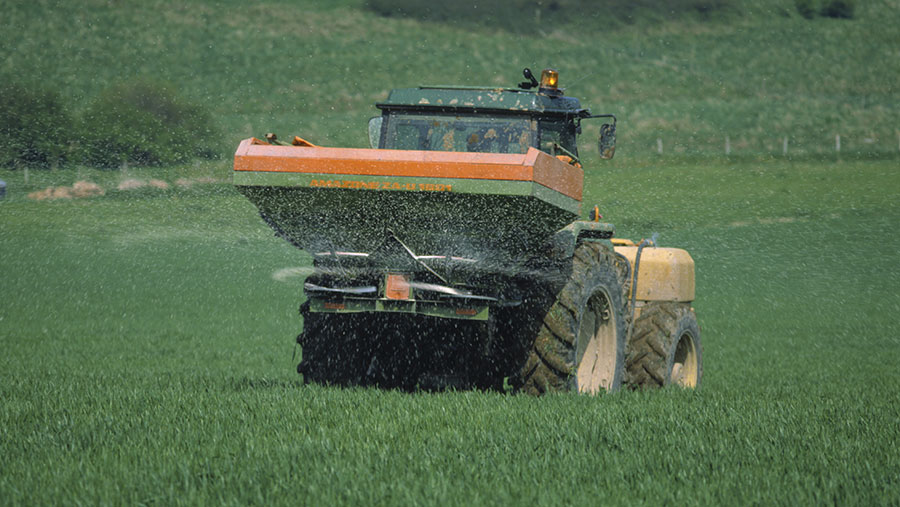Nitrogen price dropped to tempt farmer orders in slow market
 © Science Photo Library
© Science Photo Library Ammonium nitrate prices have dropped by up to £12/t in a bid to secure more orders. This puts UK product onto farm at £210/t-£215/t for the remainder of this month and November.
CF Fertilisers dropped its October/November prices to the trade by £14/t on Monday (19 October), adding £5/t each month for December and January deliveries.
It has been a very slow trade so far for the 2021 crop requirement, with trade estimates that on the solid nitrogen market, ammonium nitrate (AN) orders by growers are about 60% of volumes compared with this time last year, and urea is about 40%. The liquid sector is further ahead.
See also: Straw values continue to rise in varying regional market
UK on-farm values are behind those of continental Europe, say traders, although this is not unusual.
Low N to wheat value
The relatively high spot wheat price means the break-even ratio that divides the cost of nitrogen by the wheat price in p/kg is at a long-term low.
Across Europe, slow crop marketing by farmers means cashflow is tight and input ordering is slow, despite the expected rise in cropping areas, in particular for wheat.
Imported AN, which was already very competitive against UK product, has not dropped by as much and is available for October at £198-£205/t in many areas, although there is some regional variability in stocks.
Urea prices have moved little – supply is good for the time being and farm-delivered prices for October through to December are £246/t-£250/t.
Fertiliser update (£/t delivered October 2020) |
|||||
| UK AN (Oct-Nov) | Imported AN (Oct-Nov) | Urea (Oct) | Potash MOP (Oct-Nov) | Phosphate DAP (Oct-Nov) |
Phosphate TSP (Oct-Nov) |
| £210-£215 | £198-£205 | £246-£250 | £234-£240 | £325 | £237-£243 |
| All illustrated prices are based on full loads for cash payment on 28-day terms. | |||||
Uncertain outlook for new year
However some importers and blenders are finding that securing new urea and AN cargoes for delivery before December is becoming more difficult.
A no-deal outcome would mean a 6.5% tariff on fertilisers from 1 January.
Traders point out that current AN prices are the lowest for autumn and spring supply for three years. However, with tight cashflow and drilling the main concerns on farm, the lower prices have tempted few so far.
Phosphate and potash availability is good, and although phosphates are firming slightly, the drop in nitrogen prices means NPK blends and compounds for January are priced far lower than a year ago, say traders.
With farmer ordering at such a low level, the fertiliser trade is already sounding its warnings of a potential delivery and logistics crunch next spring.
